Michigan Tech students spanning majors and class standings embarked on the first Mexico Spring Break study abroad program in early March. Mariah Mellendorf ’25 chronicled the group's visit to communities in the Yucatan Peninsula to learn about tourism and conduct research.
Our adventures spanned small, rural communities in the jungle and large tourist destinations on the coast. After landing in Cancun, we met our driver Luis and headed to our first destination, the small village of Ek Balam. Many of us participated in a traditional Temazcal ceremony, which centers on emotional growth. We gathered in a pitch-black small stone dome. Lava rocks were brought in from the fire and water was poured on them. The extreme heat and steam was an endurance test! We were glad to settle in at a co-op run by a few local families who offered cabañas. Nets over the beds protected us from insects while we slept.
Study Abroad Experiences and Leaders
Kathyrn Hannum, program lead for this study abroad experience, is a teaching assistant professor and coordinator of student programs in Michigan Tech’s Department of Social Sciences. Co-lead Mark Rhodes is an assistant professor of geography in the department. The social sciences department offers a $2,500 voucher to incoming undergraduate students of all majors that can be used for one or more of the department’s faculty-led study abroad or study away programs. Programs planned for 2024 and beyond include Mexico, Costa Rica, Wales and Greece. Find out how to apply.
Learn more about all of Michigan Tech’s study away and study abroad experiences.
During a village tour, we learned about the town’s governing structure, in which each family has one representative to vote on community decisions. Then we visited the nearby Ek Balam ruins. It is a less-visited archaeological site due to its remote location.
Afterward, we biked to the first of many cenotes, the natural pits or sinkholes that expose groundwater. Cenotes have religious and cultural significance in Mayan history; they were viewed as entrances to the underworld. They remain important water sources in what is characterized as a dry rainforest and have become important community income sources as tourism expands inland. This cenote unfortunately claimed Dr. Hannum’s Apple watch, never to be seen again.
As we would throughout our trip, we had class when we arrived back at our lodging. We ate our evening meals together and often played euchre and other card games in the evening to wind down before going to bed.
Labs and Learning in a Diverse Yucatan Landscape
On day three, we headed to Chichen-Itza, a large archaeological site designated as one of the “New 7 Wonders of the World” and a UNESCO World Heritage Site.
Here we experienced the difference between a heavily funded large site and that of Ek Balam. Amidst an immense number of tourists, you could hear at least three different languages being spoken at any time. There were also a large number of vendors calling visitors over to their booths with promises of a good deal or authentic materials.
At our next stop, in Valladolid, we had a free evening in the city to explore shops and restaurants, taking in the vendors, music and “ballet folclórico” or “folkloric dancing” in the town square.
Day four began with a bee tour at a honey farm. We learned about the different types of bees in the Yucatan and observed their hives, some of which had a transparent side so we could see the different honeycomb patterns that various species create within. One of the most interesting aspects was learning the steps being taken to help preserve and protect bees from the impact of climate change.
Our next experience was at Punta Laguna Monkey Reserve, where visitors can take a guided tour in hopes of spotting spider monkeys. Our guide gave us many insights into the reserve — which also offers ziplining, kayaking and other activities to encourage tourism — and its visitors. The reserve has about 70 spider monkeys and two howler monkeys within roughly 21 square miles of unenclosed space, so it’s common to not see any. However, we were lucky.
After sighting eight spider monkeys, our luck held, as we successfully spotted the two howler monkeys. Oddly enough, one of the most exciting moments of the reserve was seeing the “roads” of leaf cutter ants carrying pieces of leaves back to their mounds.
Our next stopping point was Nuevo Durango, where we encountered our second cenote, Esmeralda. It is locally known as Actun sot, which is Mayan for “bat cenote.” It was a favorite with many students because it’s deep, making it possible for us to jump in from a height of about nine meters.
Two hours away, we settled into our next base, a hostel in Tulum. We took a guided tour of the Tulum ruins, smaller than the other ruins we visited and located oceanside. We observed many tour groups coming in from the coastal resorts, such as the Cancun Adventures Group.
Living Labs on Location in Tulum
We divided into two groups for our next learning experience, a challenging and interesting beach access lab. We were tasked with spending as little money as possible getting to and lounging on the beach. It may sound easy, but it most definitely is not. Most beaches can’t be accessed without going through a hotel or bar that charges admission or sets a minimum you’re required to spend on food and drinks.
The first step was figuring out how to get to the beach. We could have rented bikes, but instead of trying to navigate ourselves, both groups opted to take taxis. My group’s taxi driver took us to a beach in between two hotel zones, indicating it was basically our only option. It was also very small and quite dirty compared to the “private” beaches. There weren’t many people there. We swam and hung out until the other group showed up. Their taxi driver, when asked the same question, took them there too.
Our next day was filled with cenotes. We headed to a location that operated four: Cenotes Dos Ojos (“two eyes”), Nicte Ha and Cenote Jaguar, where a jaguar had been spotted drinking from the cenote that morning! In the Yucatan, seeing a jaguar is considered an extremely lucky experience. Here, we saw the vast differences between cenotes and how they vary in size, depth and overall appearance.
We also noticed differences between the rural, cooperatively managed cenotes in the jungle compared to privatized sites near the city where more tourists visit. The Tulum cenotes were the first we experienced that required visitors to wear life jackets regardless of swimming ability. Staff watched intently to ensure everyone was wearing life jackets, which is especially interesting because these were some of the most shallow cenotes we encountered.
Exploring Reefs, Mangroves and Amenity Migration
Day eight brought us to the Sian Ka’an bioreserve, another favorite for many students. The group hopped into two separate boats for our trip to the canals. There we floated, sitting on our life jackets, in lazy-river fashion. Fish swam by as we traveled with the current. In the mangroves, we worried about crocodiles (don’t worry, no one got eaten, yay!). Back in the boats, we found two manatees in the brackish area where the salt water and fresh water mix. A crocodile came fairly close to the boats (maybe a little too close for my comfort!).
We snorkeled on the reef on our last full day in Mexico, taking care to avoid bumping the shallow corals. It was a cool experience, but not something I’d do again because of the impact humans have by being there, even though education is helping to lessen our effects. For example, the guides made sure no one was wearing sunscreen, which can damage coral. It was also kind of scary trying to swim in a way in which I wouldn’t touch the corals — corals can also hurt you — while keeping the water out of my snorkel. The struggle was real.
Post-snorkeling, we were briefed on our amenity migrant lab assignment. Amenity migrants are people who relocate to a specific area because it offers aspects of life beyond basic human needs that are attractive and desirable to them. We had to visit the grocery store as well as search the town for things that may have been built for or impacted by amenity migrants.
On departure day, some of us got up early to go to the “panaderia,” or “bakery,” in the grocery store. We couldn’t leave without eating more delicious conchas — a type of Mexican sweet bread — and other types of “pan,” or “bread.”
We were only gone 10 days, but gained a lifetime’s worth of experiences and invaluable insight into research topics that mostly centered on the Yucatan Peninsula and how tourism impacts the area.
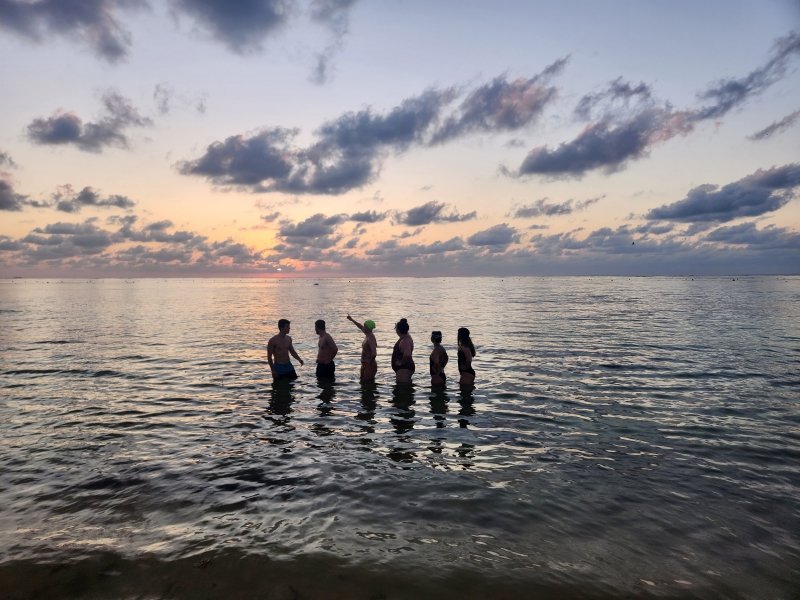
Huskies Share Research Topics and Study Abroad Highlights
Unscripted guest author Mellendorf, a dual major in cybersecurity and sustainability, science and society, researched gender roles in the Yucatan. Biomedical engineering major Gwendolyn Frolich ’26 explored the paradoxes of tourism and its effects on ecotourism. Andrea Endres ’25, a sustainability, science and society major, considered language barriers related to tourism.
Other students on the trip delved into everything from cenotes to sound pollution. Here are some of the highlights:
Maya Klanderman ’23, sustainability, science and society and anthropology dual major
Topic: Mayan Foodways being Affected by the Tourism Industry
Highlights: The most impactful learning experience I had on this trip was getting the chance to take part in the Te Mezcal and community tour in Ek Balam. The village sticks in my head more than other parts of the trip because of our ability to interact directly with the Mayan community and hear their stories and about their culture. I felt a connection with the little community and the women who were explaining how to make tortillas, hammocks and chocolate drinks. Getting to experience Mayan culture in that way and learn from those women is something that I will remember for the rest of my life.
I was able to see how close kinship ties are, the importance of the milpa (traditional agricultural system) for the community and how women take care of their households (getting at that third shift). I learned more about gender roles within Latin America and the importance of foodways at the center of Mayan life and culture within the Yucatan. In the future, I think that I will look more to stay in smaller villages where I can get to know people when I am traveling and have more genuine experiences with the people who are living in those regions rather than staying in the more "touristy" areas.
Grace Murray ’26, policy and community development major
Topic: The Historical and Cultural Significance of Cenotes
Highlights: I learned so much about considering all sides of a story. I was really awakened to thinking about all the work that has to go into something like a resort. It is very important to think about who is doing this work and why. I hope that I will always continue to think critically about this no matter where I go. I really enjoyed the Sian Kan Bio Reserve in the mangroves, and making connections with people on the trip.
Gabi Guevara ’25, mechanical engineering major
Topic: How Land and Water has been Affected by Tourism
Highlights: The most impactful learning experience was from the locals we had the chance to speak with. Many were open to tell us about their lives and thoughts. Although I was intimidated about asking questions at first, in Ek Balam and Tulum, the individuals I spoke with changed my perspective about traveling to other countries. No one should be afraid to ask questions and talk to others about their lives and experiences. My favorite parts were the friends I made along the way and swimming in cenotes — a once-in-a-lifetime experience and a highlight of my life. I never imagined that people I did not know well before the trip would now be people I call friends.
Harley Russell ’26, electrical engineering major with concentration in biomedical applications
Topic: Noise Pollution
Highlights: On the trip, we had opportunities to talk with the locals about their experiences, including tour guides, hotel owners and our waiters at restaurants. Every individual had a different opinion about what we asked them, so it was very impactful to learn about the different effects of tourism on each individual. This trip opened my eyes to how harmful tourism can be and encouraged me to look further into the impacts of my traveling in the future. We had an amazing group and great instructors, and met a ton of awesome people. I definitely wouldn't have had the same experience if we had not had such a diverse group of people to make the trip fun and exciting.
Brandon Collins ’25, mechanical engineering major
Topic: Tourism and the Displacement of Fishing Communities in the Yucatan Peninsula
Highlights: We were completely immersed in a different culture. You can't simulate this experience in a classroom. You get to see firsthand the sights, smells and feelings of what you are studying. I learned just how different other people’s lives are in Mexico. I have a more developed sense of the world as a whole and a deeper empathy for people. I loved the cenotes! The cliff-jumping into them, swimming and their sheer beauty was magnificent!
Aiden Earll ’25, materials science engineering major
Topic: Traditionalism of Natural Materials in the Yucatan Peninsula
Highlights: The tours of the ruins.
Isabella Olivares ’25, biomedical engineering major
Topic: The Impacts of an Intermediate Spanish Level on Cultural Experiences in the Yucatan Peninsula
Highlights: While swimming in a breathtaking cenote in Valladolid, three of the Spanish speakers on the trip, Kathryn, Maya and I, noticed bats flying around in the cave. One of the workers at the cenote had begun to teach us the name of the cenote in Mayan, translating words like “bat,” “cave” and “turtle.” He did this in Spanish, and this presented to me the idea of Spanish being a mediator language between English and Mayan languages. This gateway allowed native English speakers to reach a depth of understanding of Mayan culture and created a more meaningful cenote experience; on the outside, it’s easy to be overwhelmed by the fun a cenote presents, and it escaped my mind more than once that these were sacred Mayan grounds. Being able to communicate in Spanish grounded me to the real reason that we had come; to learn about the Mayan culture, and the cenote was a key representation of their mystical connection to nature and how they based many religious and spiritual aspects of their lives upon it. I was able to achieve a greater level of respect for the Mayan people and inquire more about this spiritual concept at the future cenotes we visited based on my conversation with the worker.
The most fun part of the trip was having a wonderful group of people to learn, laugh and experience a new culture with. Some of my favorite moments were when our comfort zones, both mentally and physically, were challenged.
This research will go on to influence my future travels and my role as an activist for those who are victims of large tourist institutions. In terms of language, I will ensure that I can communicate at least at a low level when visiting a foreign country, as I know how many more opportunities are presented when one has an understanding of the native language.
Skylar Scheff ’23, anthropology major
Topic: The Sociocultural Influences At Play Behind Archeological Interpretation
Highlights: The most important thing I learned on this trip is that I am capable of doing difficult things. I have been struggling with my mental health, and oftentimes feel like I just don’t do enough — that I don’t do well enough in my classes, that I’m incapable of writing a good paper, that, despite my major, I’m not very good at socializing; and being in Mexico, swimming with crocodiles, listening to tours in Spanish and climbing a temple from the pre-classic era in Ek Balam — these are experiences that helped me to overcome a lot of personal barriers. Mayan culture and the cenote was a key representation of their mystical connection to nature and how they based many religious and spiritual aspects of their lives upon it. I was able to achieve a greater level of respect for the Mayan people and inquire more about this spiritual concept at the future cenotes we visited based on my conversation with the worker.
I loved getting to see how important International Women’s Day is in Latin America! The celebrations and protests in Tulum were enthralling.
Michigan Technological University is an R1 public research university founded in 1885 in Houghton, and is home to nearly 7,500 students from more than 60 countries around the world. Consistently ranked among the best universities in the country for return on investment, Michigan's flagship technological university offers more than 185 undergraduate and graduate degree programs in science and technology, engineering, computing, forestry, business, health professions, humanities, mathematics, social sciences, and the arts. The rural campus is situated just miles from Lake Superior in Michigan's Upper Peninsula, offering year-round opportunities for outdoor adventure.
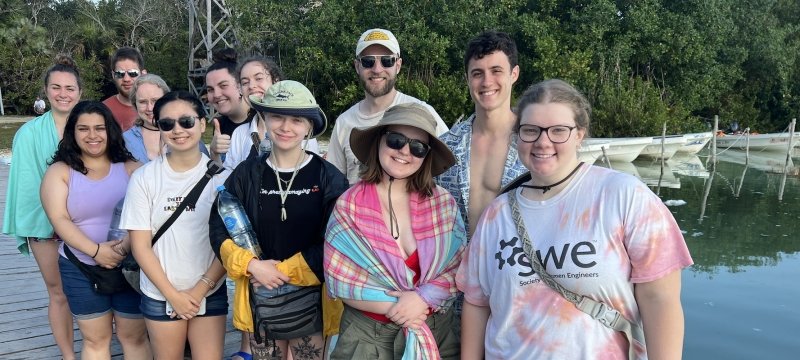
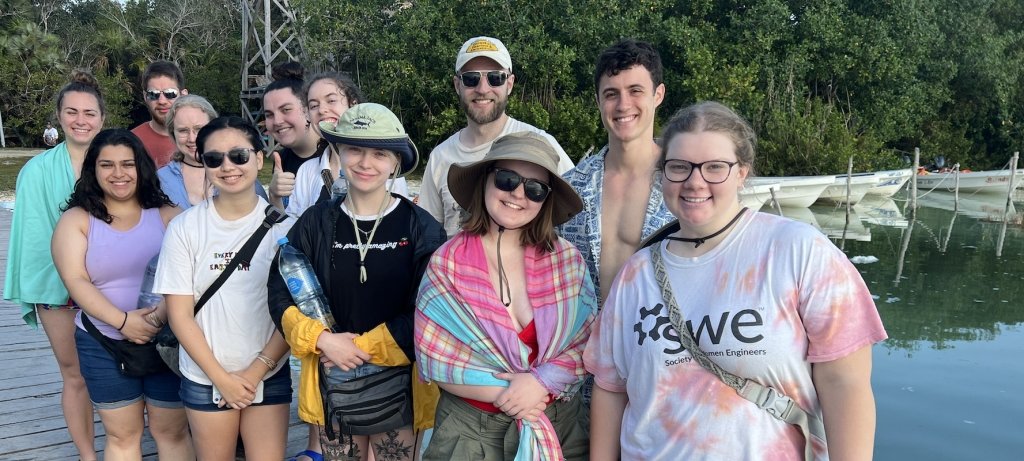
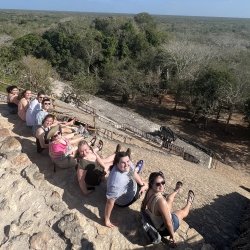
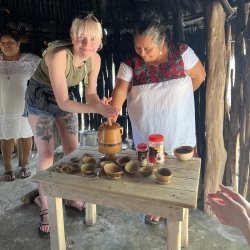
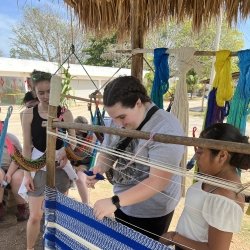
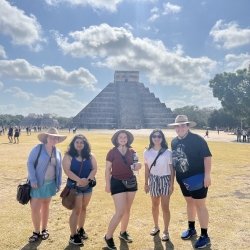
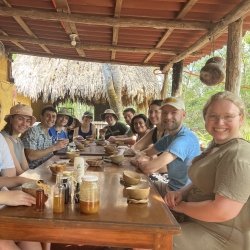
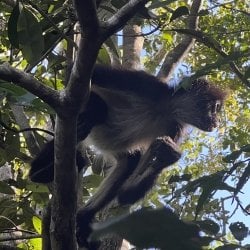
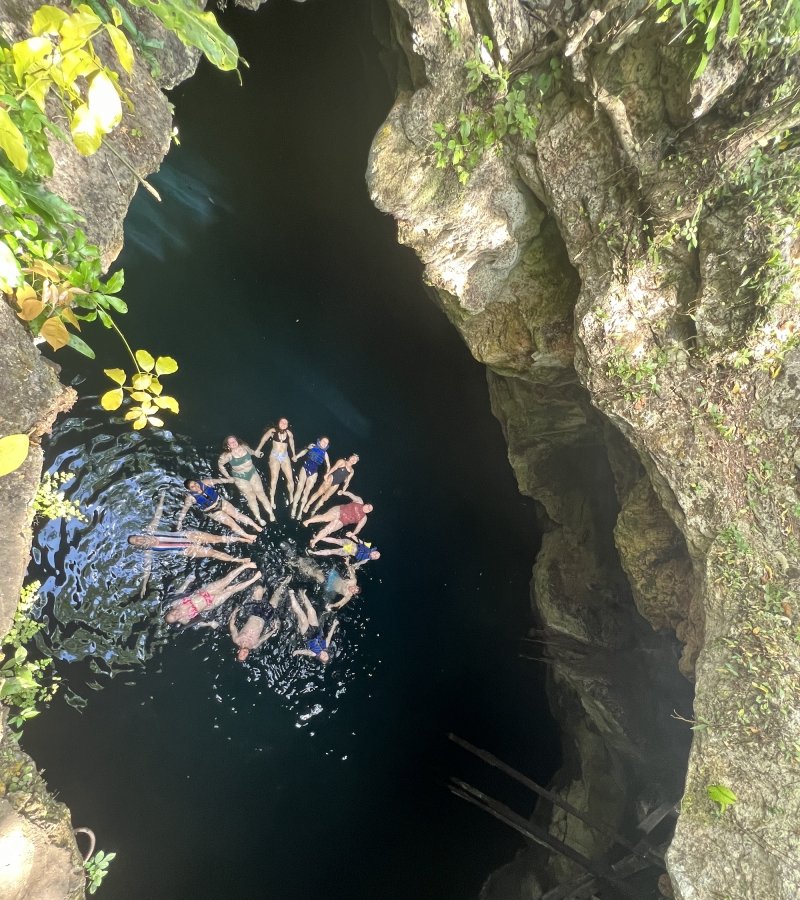
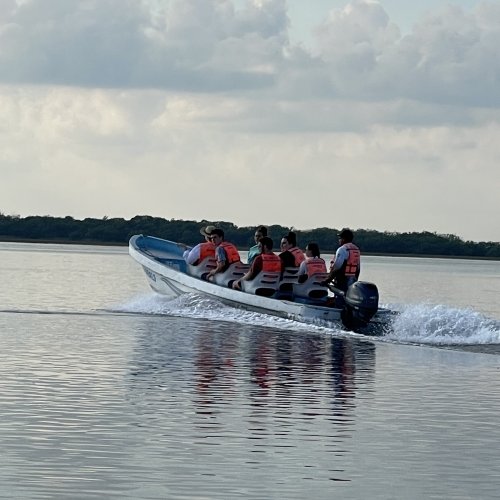
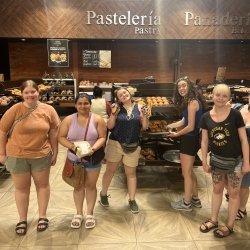
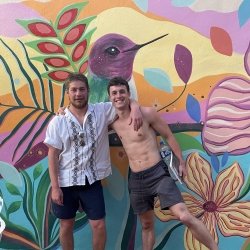
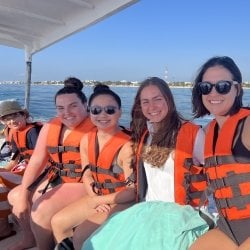

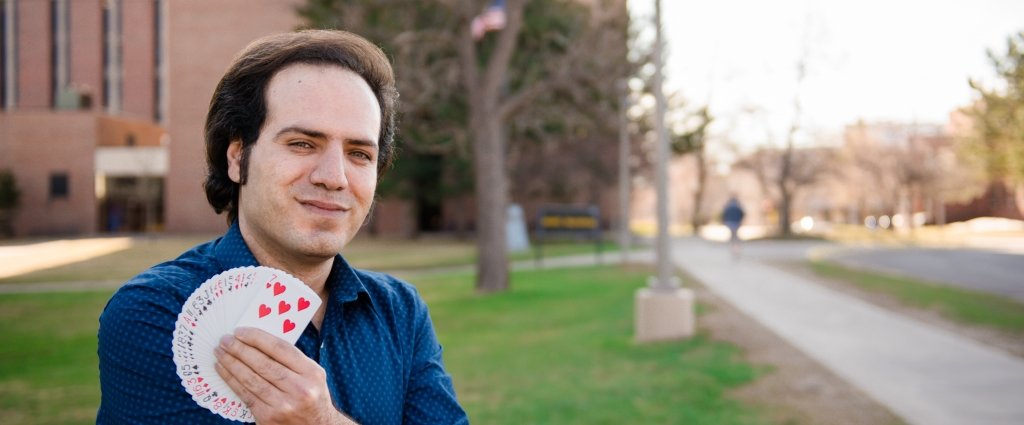
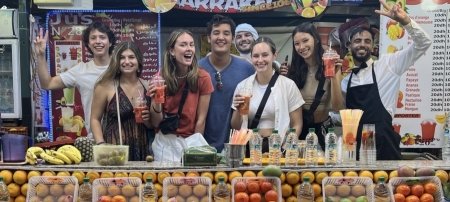
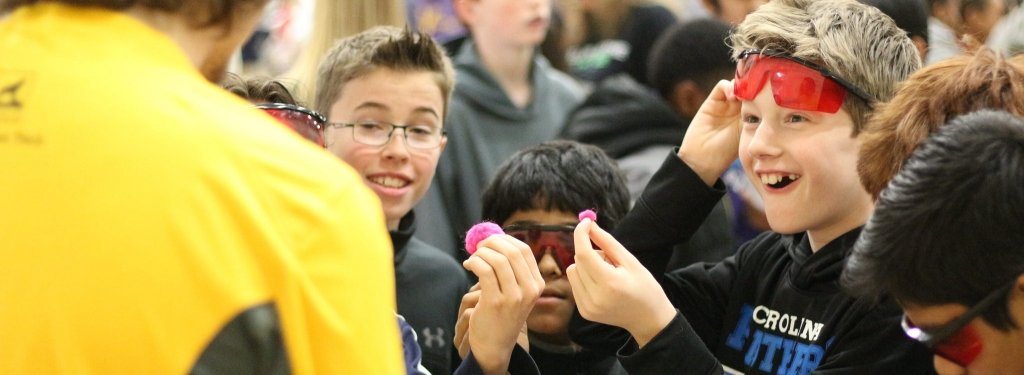
Comments